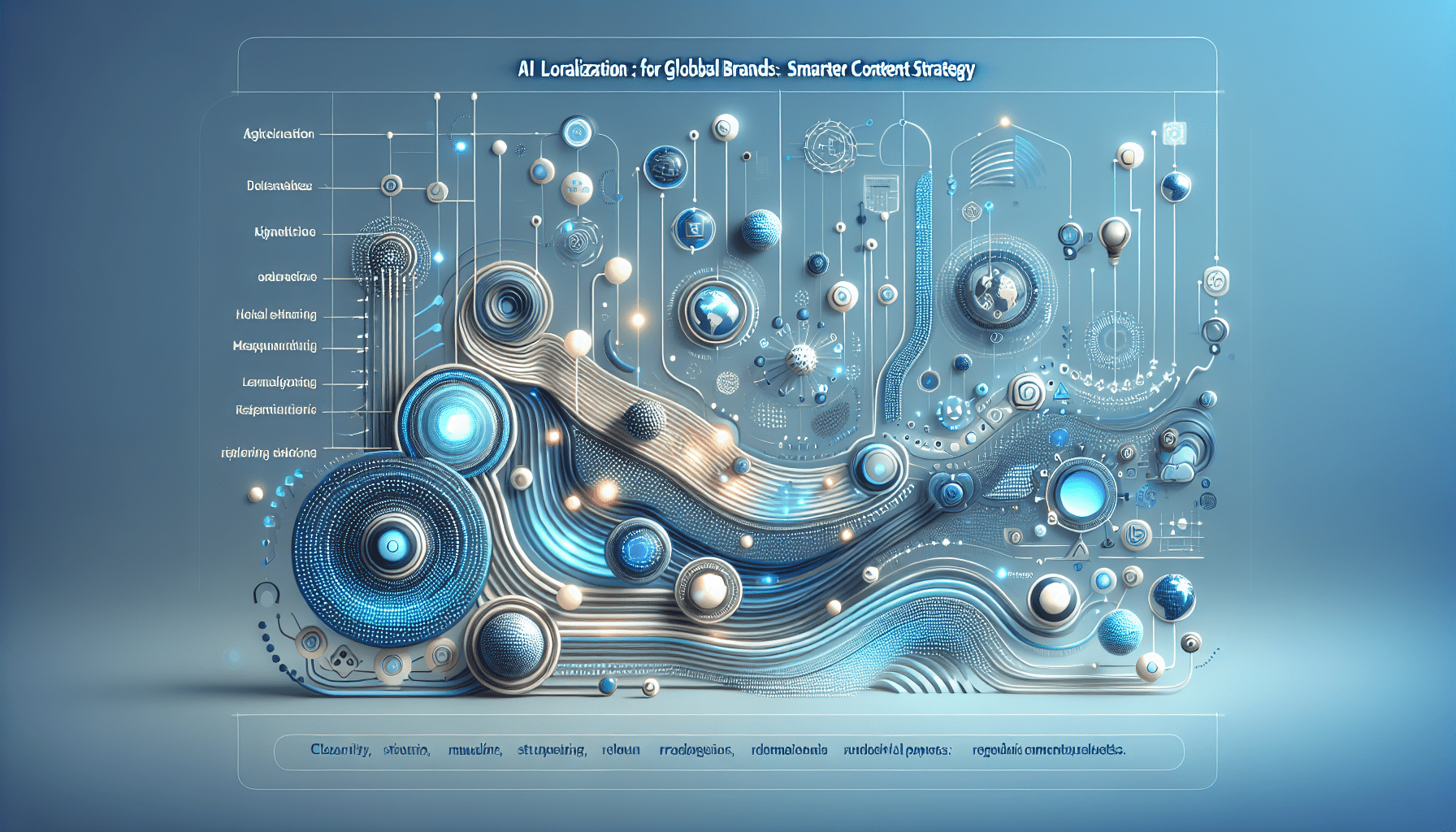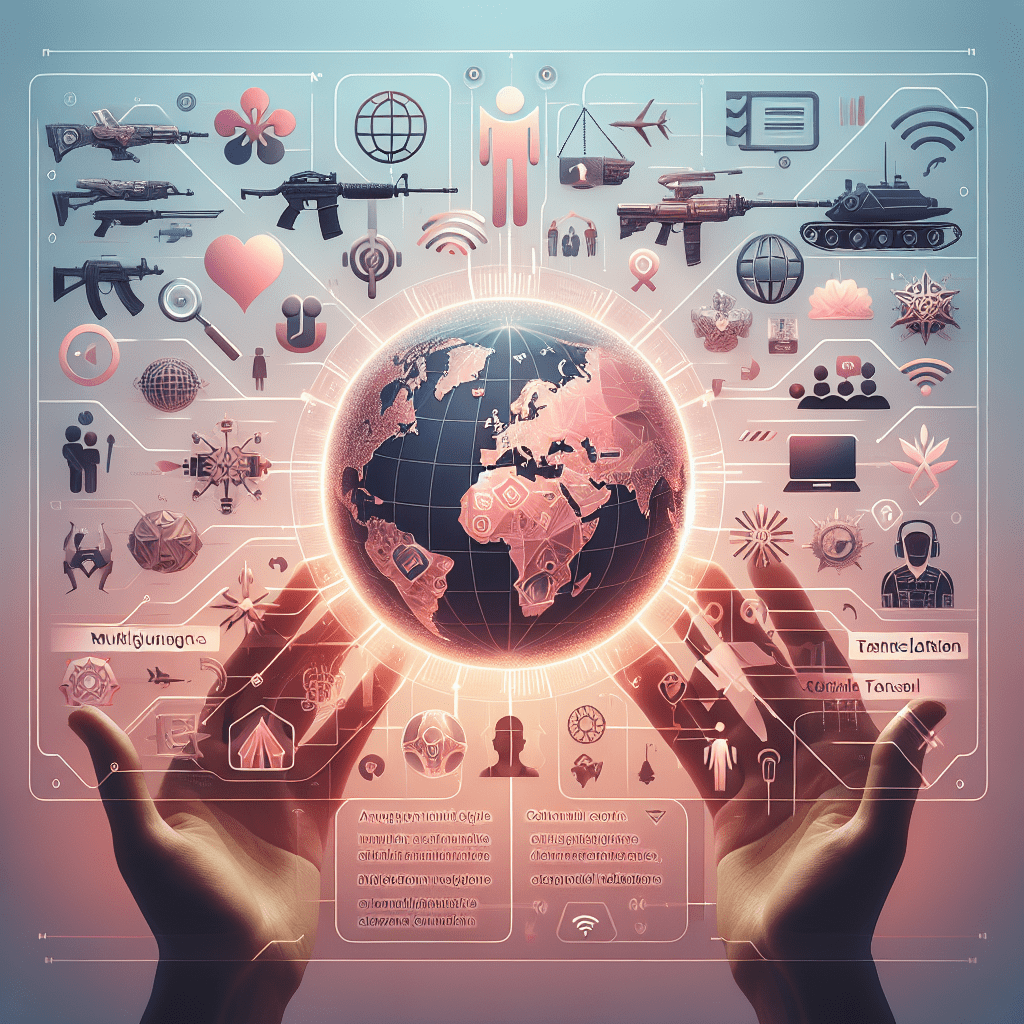About eldris
At Eldris, we automate SEO, multilingual site expansion, and EU compliance for brands scaling across Europe. Our AI-powered platform handles everything from content publishing to regulatory docs—so you don’t have to.
In This Article
- AI localization enables culturally relevant content at scale.
- Machine translation has matured to deliver context-aware results.
- Localised SEO strategies benefit significantly from AI-powered tools.
- AI tools reduce costs while shortening time-to-market for multilingual content.
- Eldris offers robust solutions for seamless global expansion.
The Rise of AI in Content Localization
How Artificial Intelligence Is Changing the Game
AI localization is rapidly transforming how global businesses customise their content for international audiences. By leveraging artificial intelligence, companies are moving away from traditional manual translation methods and adopting machine-driven solutions that are faster, more scalable, and significantly more cost-effective. Businesses are no longer restricted to manual workflows and inconsistent human outputs. Instead, they can now rely on advanced models that interpret linguistic nuances, idiomatic expressions, and contextual variance with remarkable precision.

Understanding Localized Content in a Global Economy
Why Multilingual Nuance Matters
Localised content is not simply translated content. True localisation involves adapting language, tone, cultural references, and even format to suit specific regional audiences. In an era where consumers expect personalised digital experiences, a poorly localised message can harm brand perception and trust. Whether it’s aligning with local humour, adjusting for differing date formats, or respecting cultural taboos, effective localisation makes global content feel as though it was created natively for each region.
“AI localization doesn’t just translate—it transforms content into culturally relevant experiences.”
The Technology Behind AI-Powered Localization
At the heart of AI localization lies a suite of advanced technologies. Neural machine translation (NMT) forms the bedrock, enabling contextually aware translation models that go beyond word-to-word replacements. Deep learning networks are trained on immense multilingual datasets, allowing them to refine language comprehension, grammar usage, and cultural nuance. Additionally, natural language processing (NLP) enhances sentence restructuring and tone modification, making content more relatable to target audiences. Certain systems incorporate real-time feedback loops, where human editors train the AI for even higher quality output. This symbiosis between human knowledge and AI scalability creates an unmatched localisation paradigm.
Benefits of AI Localization for International Marketing
AI localization offers a vast array of benefits, particularly for businesses looking to expand internationally. The primary advantage lies in scalability. With AI, content can be localised into multiple languages concurrently, significantly reducing turnaround times. In addition, AI systems consistently apply linguistic rules, tone, and formatting preferences, ensuring messaging remains on-brand globally. Cost reduction is another major benefit—traditional localisation often involves large teams of translators, editors, and project managers. AI systems automate substantial portions of this workflow, streamlining processes while maintaining quality. Furthermore, AI tools offer data-driven insights, enabling marketers to iterate and improve local messaging with measurable KPIs.
Key Differences: AI Localization vs Traditional Translation
Although localisation and translation are closely related, there are clear distinctions—especially when considering AI-based models. Traditional translation focuses on converting text from one language to another, often preserving the original structure. In contrast, AI localization rewrites content with the target audience in mind, accounting for cultural context, tone, and readability preferences. While human translation is typically slow and expensive, AI systems offer speed, consistency, and the ability to learn from corrections. Although expert human intervention is still valuable for highly creative or regulated content, AI enables rapid iteration and adaptation for everyday digital assets such as blogs, landing pages, ads, and email campaigns.
Cultural Intelligence and Automated Customization
What sets AI localization apart is its growing cultural intelligence. Advanced AI platforms incorporate demographic data, linguistic trends, and behavioural analytics to inform how content should be adapted for each region. Beyond language, this involves adjusting visuals, idioms, and even product references that may vary across cultures. For example, a marketing campaign that references baseball in the United States might require substitution with cricket terminology for audiences in India. Through AI-driven contextual recognition and memory systems, these adjustments happen automatically—streamlining workflows without compromising local relevance. This capability empowers brands to connect with audiences while avoiding missteps that could cause reputational harm.
Best AI Tools for Multilingual Content Creation
A number of powerful tools have entered the market to support AI localization efforts. Solutions like DeepL and Google Cloud Translation API offer real-time neural machine translation with impressive accuracy. Meanwhile, platforms like Phrase, Smartling, and Transifex cater to enterprise-grade localisation management—providing collaboration features, automated QA checks, and integration with content management systems (CMS). AI-based content generation tools like Jasper.ai or OpenAI’s GPT series can assist in drafting initial copy adaptable across languages. These tools not only expedite content delivery but also reduce redundancy, with built-in memory ensuring consistent terminology. When used strategically, such platforms enable content creators and marketers to execute multilingual strategies faster and more affordably than ever before.
Scaling Your SEO Strategy with AI-Powered Translations
How AI Localization Boosts Global Search Visibility
Search engine optimisation doesn’t stop at the source language. To succeed globally, brands must optimise content for local search engines in every market they operate in. AI localization tools play an essential role in achieving this. They allow marketers to adapt keywords based on regional search patterns, not just translate them. For instance, a product commonly referred to using one term in the UK might be searched with a completely different phrase in Germany or Japan. AI systems can uncover these nuances using local search data, buyer intent modelling, and competitor benchmarks. Subsequently, metadata, alt text, headings, and anchor links are all adjusted for regional indexing. These enhancements not only draw more traffic but also increase on-page engagement and conversion rates. For related strategies, review Learn more about AI-Driven Multilingual Content Strategies.
Challenges and Limitations of AI Localization
Despite its numerous advantages, AI localization is not without its challenges. One notable limitation is its performance in highly creative or emotionally charged content, such as poetry, humour, or brand storytelling. Machines still struggle to replicate the subtleties of human creativity and emotional resonance. Furthermore, AI systems may occasionally misinterpret idiomatic expressions, leading to awkward or even offensive translations. Quality assurance, while partially automated, still requires human review for mission-critical material. Regulatory localisation—such as compliance documents—often mandates human oversight, especially in sectors like healthcare and finance. Lastly, initial implementation costs can be high, and training datasets might not adequately represent niche dialects or lesser-used languages. However, ongoing advancements and hybrid workflows mitigate many of these risks over time. For a deeper technical breakdown, see Comprehensive AI content localization guide.
Future Trends: Where Is AI Localization Headed?
AI localization continues to evolve at a breakneck pace, influenced by the rapid advancement of large language models (LLMs), multilingual embeddings, and domain-specific AI training. Future systems are expected to become markedly more contextual, offering real-time localisation based on user location, behaviour, and preference history. Auto-labelling, sentiment analysis, and voice localisation are key areas of development. Live subtitle generation in native dialects may become standard for webinars and live streams, enhancing accessibility and reach. Moreover, AI will likely integrate more deeply with augmented reality (AR) and virtual reality (VR), helping brands localise immersive content environments instantly. The increasing democratisation of LLMs means small businesses, not just large enterprises, will harness this technology to reach new markets efficiently.
How Eldris Simplifies Multilingual Expansion
Eldris is at the cutting edge of AI localization. By combining robust neural translation models with cultural intelligence, Eldris provides end-to-end content localisation services suitable for scaling businesses. Its platform integrates directly into most CMS platforms, enabling seamless automation of page translations, image localisation, and SEO adjustments. One of Eldris’s standout features is its real-time QA engine, which ensures terminological consistency and context validation across all regional variants. The result is a multilingual experience that feels native and genuine to users. Eldris also includes built-in analytics, helping businesses track localisation ROI, identify content gaps, and optimise campaigns by market. Whether launching in new territories or enhancing existing international frameworks, Eldris significantly reduces the complexity of global engagement. Explore more with Read a related article.
Conclusion: Smarter Strategies for Going Global
[CONCLUSION_CONTENT]
Great guide on creating-localized-content-an-ai-approach – Community Feedback
What is AI for content localization?
AI for content localization uses artificial intelligence to adapt content for different languages, cultures, and markets, ensuring messages resonate globally.
How does AI-driven localization differ from traditional translation?
AI-driven localization goes beyond mere translation, adapting tone, nuance, and cultural context for local relevance and engagement.
What are the benefits of using AI for creating localized content?
AI accelerates content translation, increases consistency, reduces costs, and enables brands to scale their multilingual presence efficiently.








